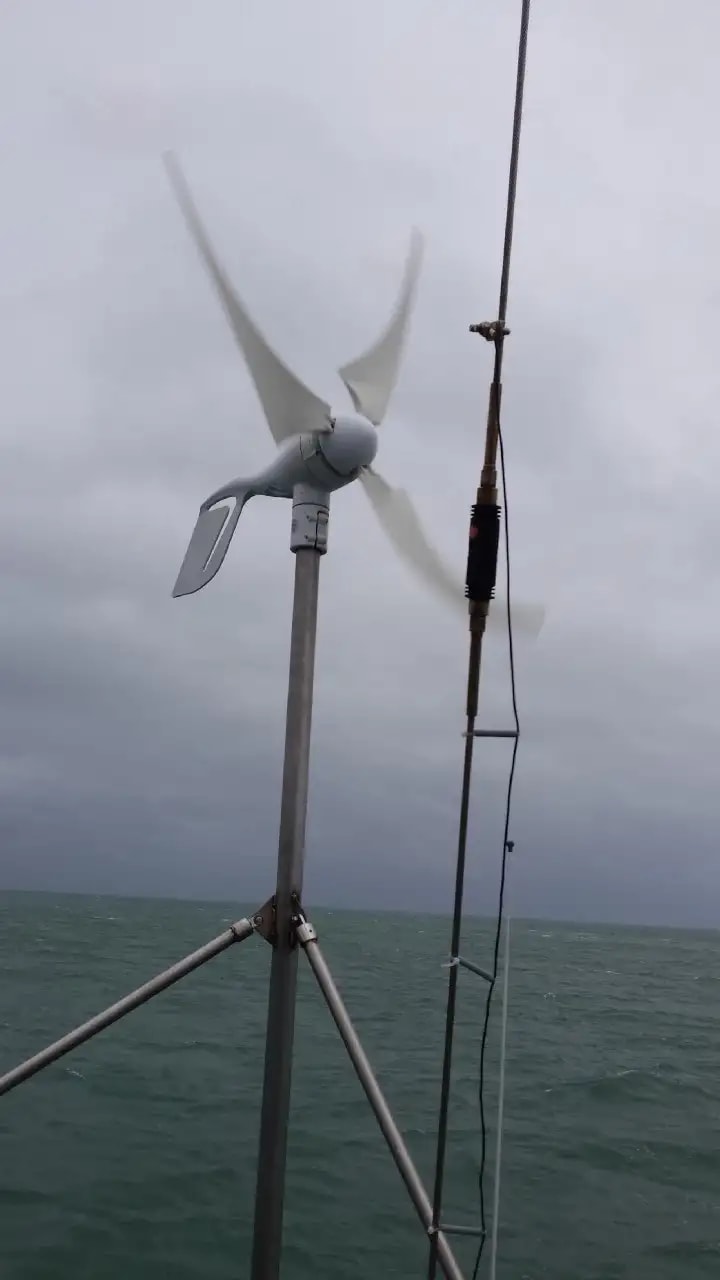Going Green is Driving a World Copper Shortage
The 2050 net zero carbon target is impossible to achieve because we cannot mine enough copper as demand doubles

A personal story kicked this one off
This week I renewed the gas piping on my boat and wondered what to do with the old copper pipework. Copper is in big demand, for sure, but I’m not sure that 3 metres of scrap copper is worth much. 1/2 kg in weight? At $3.31 a US pound my copper is worth about $3. Maybe.
Where do I take it? What’s the cost in time and transport for taking it to a scrap merchant? Would they even bother? Like much re-cycling, it costs to dispose of.
My son-in-law runs a plumbing business and he saves all the scrap copper from his contracts. In fact, at the bottom of his property he has a pile of old domestic copper water heating cylinders and piping. It’s worth a fair bit (I’m guessing) and he regularly has it collected by a metal dealer. He’s had some collected by thieves too and so he’s had to bump up security.
To replace my boat’s gas piping I went and bought some 5/16" new piping. 3 metres, less than AUS$40, and was surprised by the price — it was much cheaper than I expected. Unfortunately my son-in-law is literally half a world away so there were no cheap family deals on offer — or anywhere to dump my scrap.
I’ll wait till I berth in a marina where they have recycling. In the meantime I’ll store it with bits of steel and a chrome-on-brass galley faucet. Yes, I’m working on the fresh water system too, and also installing a new shower (the first mate has been complaining).

So you can see that I was checking the price of copper and this opened up a vein of copper stories.
The main story
A recent report by the ratings agency Standard and Poors (S&P) — you know, the ‘S&P 500' outfit — concluded that worldwide annual demand for copper is likely to double by 2035 from 25 million metric tons to 50. Further, no matter the scenario, S&P said it’s unlikely the world will be able to meet it.
They’ve gone 10 years further ahead with their forecast than the International Energy Agency did in 2021, but the conclusions are broadly in line:

There’s a big shortage coming. That’s a huge problem as it means that prices will escalate and the cost of going green with all those new EVs will ramp up too. Just when governments are starting to ban future internal combustion engines for cars, trucks and buses.
A dirty business
Mining is generally considered to be a dirty business — environmentally unfriendly to put it politely.
As the world looks to reduce its reliance on fossil fuels and move towards a more sustainable future, electric vehicles (EVs) are seen as a key part of the solution. However, this shift is likely to have a significant impact on global copper demand.
It is estimated that each EV (car) requires around 80 kg of copper (buses need ten times that), which is nearly four times the amount used in a conventional vehicle. With sales of EVs expected to surge in the coming years, this could put immense pressure on the world’s copper resources.
According to the International Energy Agency, there could be as many as 125 million EVs on the road just by 2030. This would require an additional 1.3 million tonnes of copper per year — equivalent to around 20% of global production in 2017. And by 2050?
The vast majority of the world’s copper is mined, with only a small proportion coming from recycled sources (my gas pipes). This means that any increase in demand is likely to put further strain on already-stretched mining operations.
As copper prices rise it will become increasingly difficult for countries to transition to a low-carbon future.
Given the challenges, it is clear that a sustainable solution will be needed to meet the world’s growing demand for copper. This will require a concerted effort from all stakeholders — including miners, manufacturers and policy-makers — to ensure that the necessary resources are available.
While the move to EVs is apparently essential for tackling climate change, it is important to ensure that this transition is done in a way that does not put undue strain on the world’s resources, otherwise, the environmental benefits of EVs could be offset by the negative impacts of unsustainable copper mining.
“It currently takes 16 years, on average, to develop a new mine, meaning that a new mine seeking permission today would not become productive in time to accommodate the demand spike,” S&P said, quoting an IEA study.
On China
The S&P report further says that “China, which accounts for more than 50% of global refined copper demand, will remain the key driver of global trends”
With China leading the way in terms of EV adoption, it is likely that they will also play a crucial role in meeting the world’s future copper needs.
Now that hits home with me, because last month I installed a wind generator on my boat. Until now I had been unable to afford one — it would have cost $2k even doing the welding work myself. I’m trying to cut down use of a petrol generator.
I already have solar panels but they don’t work at night. So I bought a Chinese built wind generator (yes, about 3 kg Chinese copper and rare earth magnets) and did the job for about $700 (I did the welding myself). It goes against the grain to buy Chinese, but what could I do — burn more gasoline? Don’t answer that.

While there are currently no concerns about the world’s ability to meet this demand as mining and recycling efforts ramp up, there is a risk that price escalation could make EVs unaffordable for many consumers.
A flip side?
This is not the only challenge that the EV industry faces. As battery technology improves and cars become more efficient, the amount of copper required per vehicle could fall, potentially leading to a surplus of the metal and price falls and those new copper mines start producing.
The future of the EV industry will therefore hinge finding a balance between meeting rising demand and ensuring a stable supply of copper. This will be no easy task but it is essential if we are to make the transition to a sustainable future.
Conclusions
- World consumption of copper is going up, driven by the push towards carbon neutrality and there is a developing world shortage.
- The cost of EVs will go up but to what extent is unknown as there will be an offset caused by the benefits of scale — markets and manufacturing — and possibly new battery technologies.
- It looks like the target of net zero carbon by 2050 is too challenging.
- I’m burning less gasoline and most of the time I get around using wind in my sails
- Time is of the essence as half of Europe is on fire (2022) — and not only due to Russia. More carbon generation.
===
About the Creator
James Marinero
I live on a boat and write as I sail slowly around the world. Follow me for a varied story diet: true stories, humor, tech, AI, travel, geopolitics and more. I also write techno thrillers, with six to my name. More of my stories on Medium






Comments
There are no comments for this story
Be the first to respond and start the conversation.